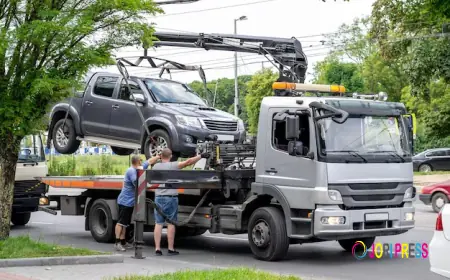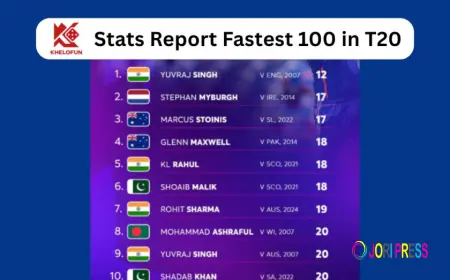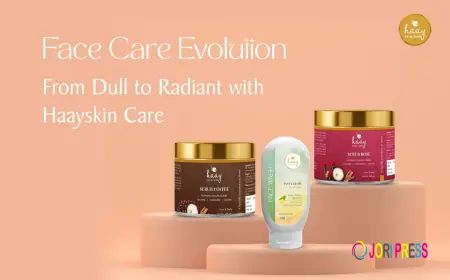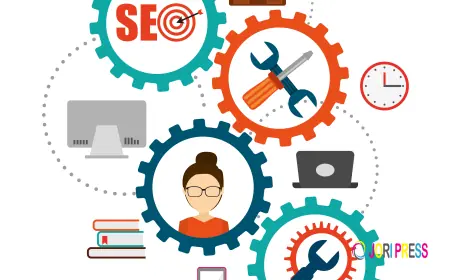What Does OEM Mean and How Does It Work?
Learn what OEM (Original Equipment Manufacturer) means, how it works, and why it’s crucial in modern manufacturing. Discover how Jindal Lifestyle, with decades of expertise and advanced stainless-steel infrastructure, delivers precision-engineered OEM solutions that drive innovation, efficiency, and sustainability across industries.
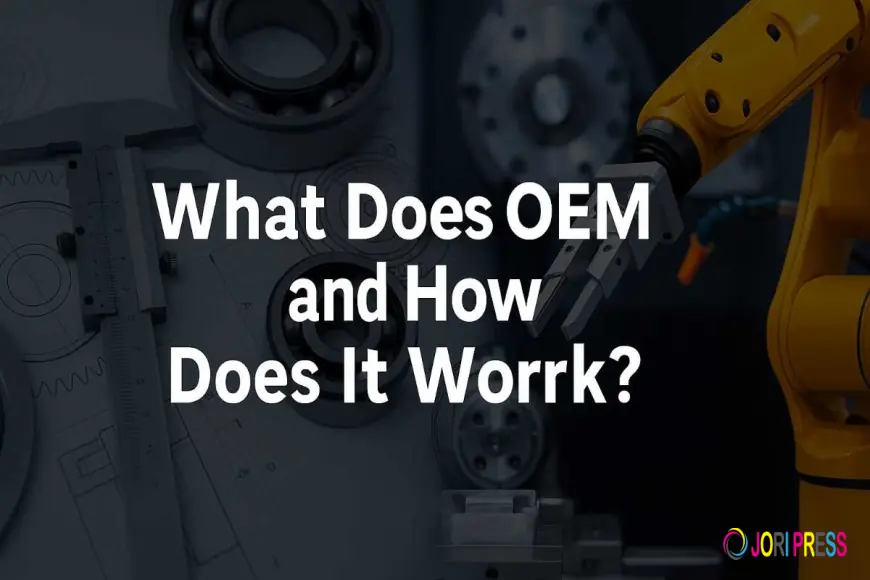
In today’s interconnected manufacturing ecosystem, few products are made entirely under one roof. From automobiles to electronics, the components that make up the final product often come from multiple specialized manufacturers. This system runs efficiently because of a model known as OEM — Original Equipment Manufacturing.
In this article, we’ll explore what OEM means, how it works, and why it plays such a crucial role in modern manufacturing. We’ll also highlight how Jindal Lifestyle, with its decades of expertise and advanced infrastructure, continues to be a reliable partner for businesses across industries.
What Does OEM Mean?
OEM stands for Original Equipment Manufacturer, a term used to describe companies that produce components, subsystems, or finished products that other businesses use in their own branded products.
Simply put, an OEM manufactures the parts — often designed to specific requirements — that another company assembles or integrates into a final product sold under its brand name.
For instance, when you purchase a car, smartphone, or home appliance, the brand logo on the exterior might not belong to the manufacturer that made every part inside it. Many of those components — from stainless-steel fittings to electronic modules — are produced by OEMs.
This partnership allows businesses to maintain high product standards while focusing on their core competencies such as design, innovation, marketing, and customer experience.
How OEM Works
The OEM model is built on collaboration. A company that needs certain parts or systems for its final product approaches an OEM to produce them. The process usually follows these steps:
-
Design Collaboration: The client provides product specifications, performance requirements, and design expectations.
-
Engineering and Prototyping: The OEM’s technical team develops prototypes, ensuring material precision, performance, and compatibility.
-
Manufacturing and Quality Control: Once approved, the OEM begins mass production using advanced manufacturing systems and strict quality checks.
-
Integration: The client company integrates these OEM components into its final product and markets it under its brand name.
This approach allows companies to leverage the expertise, technology, and economies of scale of their OEM partners while maintaining full control over the branding and customer relationship.
The Role of OEMs in Today’s Manufacturing Ecosystem
OEMs have become an essential part of global supply chains. Their role extends beyond production — they contribute to innovation, cost efficiency, and sustainability.
Here’s why OEMs are vital to modern manufacturing:
-
Specialized Expertise: OEMs bring domain-specific knowledge and advanced processes that general manufacturers may not have in-house.
-
Scalability: OEMs operate with large production capacities, enabling consistent quality and quick turnaround times.
-
Technology Integration: OEMs stay at the forefront of new manufacturing technologies, allowing client companies to benefit without investing heavily in R&D.
-
Cost Optimization: Outsourcing production to an OEM reduces the need for heavy capital investment in equipment and facilities.
By collaborating with OEMs, companies can focus on what they do best — designing, branding, and selling — while ensuring their products are built to the highest standards.
Benefits of Partnering with an OEM
1. Cost Efficiency
Building an entire manufacturing infrastructure can be expensive. Partnering with an OEM significantly lowers costs since the OEM already has the required facilities, tools, and technical expertise.
This arrangement eliminates the need for duplicate investment and allows businesses to benefit from economies of scale.
2. Focus on Core Competencies
When production is handled by an OEM, companies can redirect their focus to core functions like product design, innovation, and customer engagement. This strategic division of work leads to faster product development and improved quality.
3. Access to Advanced Technology
OEMs often use state-of-the-art machinery and processes that may not be feasible for all brands to maintain internally. By leveraging an OEM’s capabilities, businesses can access cutting-edge manufacturing techniques, ensuring products meet modern performance and safety standards.
4. Scalability and Reliability
OEMs specialize in consistent and large-scale production. Whether you need a few hundred units or thousands, the process remains standardized, ensuring reliability in quality and delivery timelines.
5. Quality Assurance
Since OEMs focus entirely on manufacturing, their internal systems are designed for precision, consistency, and quality control. This allows client companies to confidently integrate these components into their products without worrying about inconsistencies or failures.
Why OEM Partnerships Drive Innovation
OEMs aren’t just production partners — they’re innovation enablers. By specializing in one domain, OEMs develop deep technical expertise that can inspire design improvements and new solutions.
For example, OEMs working in stainless-steel fabrication may introduce more durable finishes or lighter components that help clients improve efficiency and aesthetics simultaneously. This synergy between brand creativity and OEM precision leads to faster innovation and more competitive products.
Sustainability in OEM Manufacturing
Modern OEMs are increasingly aligning with sustainability goals. By using recyclable materials, energy-efficient processes, and waste-minimization systems, OEMs help reduce the environmental footprint of manufacturing.
Stainless steel, for instance, is one of the most sustainable materials used in modern production. It’s 100% recyclable, durable, and requires minimal maintenance over its lifespan. OEMs that specialize in stainless-steel products — like Jindal Lifestyle — contribute to a circular economy where long-lasting design and resource efficiency go hand in hand.
The Jindal Lifestyle Advantage
While the concept of OEM applies across industries, choosing the right manufacturing partner is what determines long-term success.
With over five decades of experience, Jindal Lifestyle has established itself as a trusted Original Equipment Manufacturer specializing in high-precision stainless-steel solutions.
Here’s what sets Jindal Lifestyle apart:
1. State-of-the-Art Facilities
With two cutting-edge manufacturing units boasting a combined capacity of 8,000 MT, Jindal Lifestyle is equipped with world-class technology in metal forming, welding, finishing, and polishing. This enables consistent quality and high-volume production that meets global standards.
2. In-House Capabilities
From raw material production and design to R&D and prototyping, every stage of the process is managed in-house. This ensures shorter lead times, better coordination, and total quality control — something few OEMs can offer.
3. Customization and Flexibility
Every client has unique requirements. Jindal Lifestyle’s OEM process is built around customization, ensuring that each product — whether a component, assembly, or complete system — is tailored to exact specifications.
4. Expertise and Trust
With over five decades of manufacturing expertise, Jindal Lifestyle has earned the trust of leading global brands, industries, and government bodies. Our OEM relationships are built on consistent quality, transparency, and reliability.
5. Commitment to Sustainability
Sustainability isn’t just a feature — it’s a foundation. Jindal Lifestyle prioritizes environmentally responsible manufacturing, ensuring every stainless-steel product contributes to a greener, longer-lasting future.
The Future of OEM Partnerships
As industries evolve, OEM partnerships will continue to shape the global manufacturing landscape. The demand for specialized, high-quality components is increasing across sectors — from consumer goods and architecture to energy and transportation.
Companies that collaborate with reliable OEMs can scale faster, innovate better, and meet evolving market demands efficiently.
With its unmatched expertise, advanced facilities, and sustainable approach, Jindal Lifestyle stands ready to empower brands worldwide with precision-engineered stainless-steel products built to perform and last.
Conclusion
The OEM model represents the backbone of modern manufacturing — a partnership built on trust, expertise, and shared innovation. For companies looking to strengthen their production capabilities without compromising on quality or efficiency, OEM collaboration is the smart way forward.
With a legacy of craftsmanship, a future-ready infrastructure, and a commitment to sustainability, Jindal Lifestyle continues to set benchmarks in the world of Original Equipment Manufacturing — delivering not just components, but lasting value and engineering excellence.
What's Your Reaction?
 Like
0
Like
0
 Dislike
0
Dislike
0
 Love
0
Love
0
 Funny
0
Funny
0
 Angry
0
Angry
0
 Sad
0
Sad
0
 Wow
0
Wow
0









